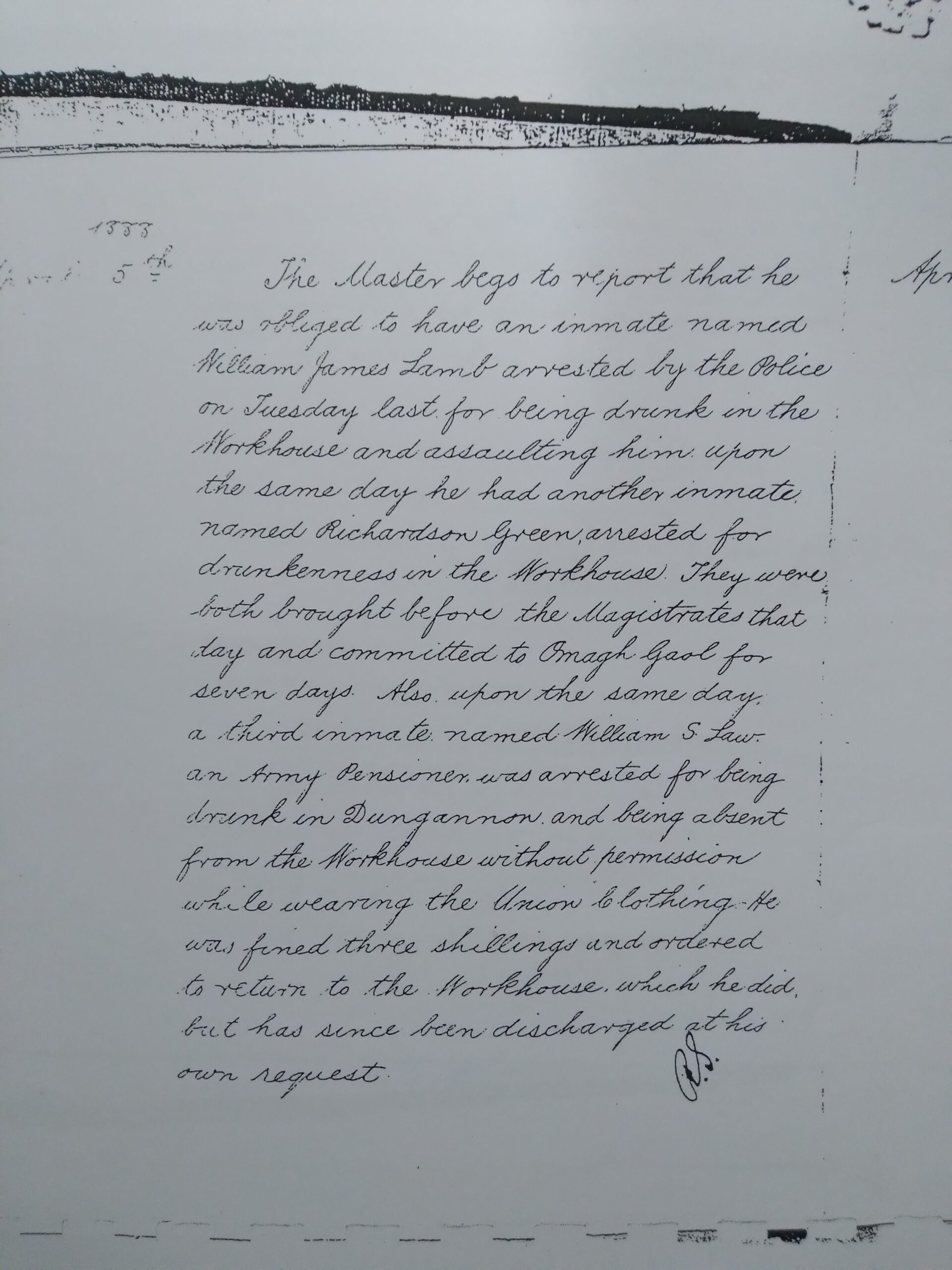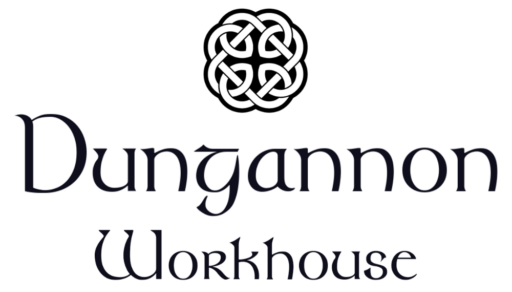Medicine and the workhouse
Although the workhouse was a dreaded and feared institution, for many people the workhouse provided a safe sanctuary and somewhere to be treated for a variety of illnesses. From the 1870s onwards the numbers attending the workhouse for medical treatment increased. The treatment of illnesses commenced prior to the Famine, although the fever hospital was greatly enhanced during the late 1840s.
The treatment of illnesses was also provided for through dispensaries outside of the workhouse, in an effort to keep people from its doors. These included dispensaries at Benburb, Ballymagran, Clonavaddy, Coalisland and Dungannon. Some of the early officials involved in dispensing medical aid included in the 1850s Robert Bolton, medical superintendent of the Dungannon dispensary, and James Hamilton who was medical officer in the workhouse and fever hospital. As early as the 1860s vaccinations were being carried out in Dungannon workhouse in an effort to prevent the further spread of infectious diseases.


In 1873, according to the Irish Medical Directory, medical aid in the Dungannon Poor Law Union was provided for by: William Nevill in Dungannon; Thomas Jamieson in Clonavaddy; William Robert Moorhead in Benburb; Andrew Simpson in Ballymagran and William Twigg who was the medical officer for the workhouse. E.S. Tener was the coroner attached to the workhouse, carrying out inquests on those who died in the building.
Many of the medicines supplied to Dungannon workhouse came from J Nethery of Dungannon and Messrs J Clarke and Company of Belfast who were medical contractors for the union and workhouse in the early part of the twentieth Century. Nethery supplied five other workhouses in the north of Ireland.
In the early part of the twentieth century there were still a number of cases of infectious diseases and many entered the workhouse system to be treated for such. In Dungannon, for example, these included in 1903 cases of smallpox, diphtheria, scarlet fever, enteric fever and a number of people suffering from epilepsy, then, still greatly misunderstood. A report of 1898, found that 17 people in the workhouse were deemed to be of ‘unsound mind’, including some who were said to be ‘epileptic’.
An examination of the Dungannon Workhouse Death Register shows that more than 180 different causes of death were listed throughout the period 1842-1900 and included:
phthisis, dropsy, paralysis, apoplexy, typhoid, jaundice, Bright’s Disease, scarlatina, consumption, tuberculosis, haemoptysis and hydrocephalus amongst others.




